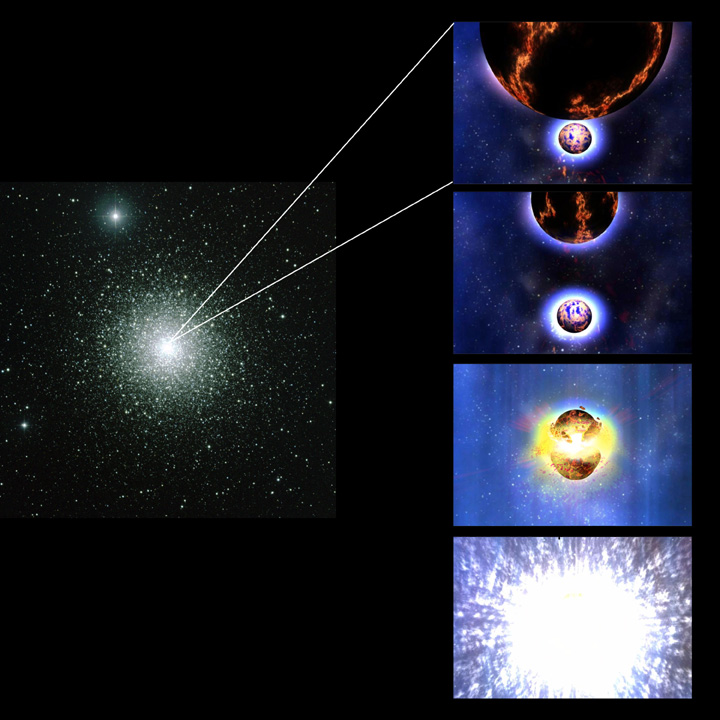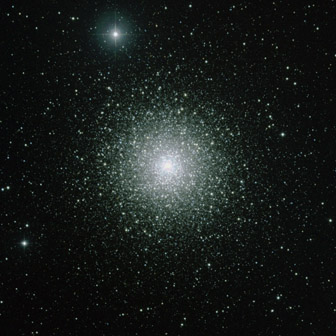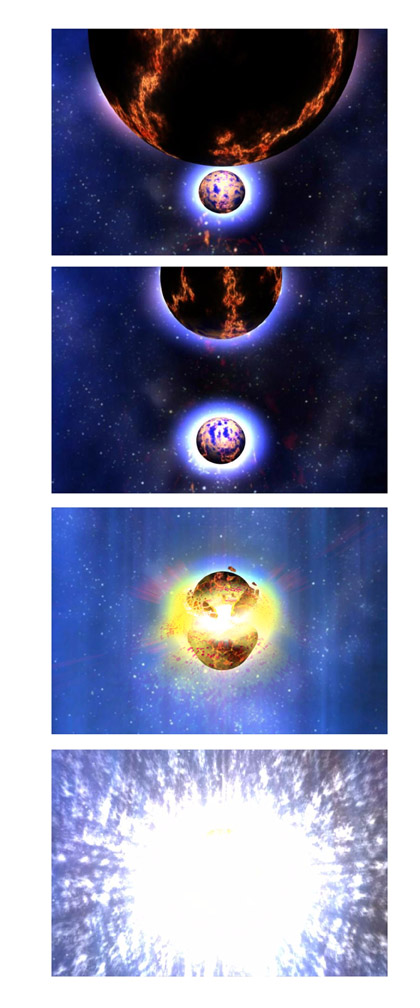Image List
-

The photograph at left shows the galactic globular cluster M15, which contains a double neutron star system that will eventually collide to create a gamma-ray burst, as shown in the inset images at right. The right-hand images are taken from a computer animation and shows several snapshots covering just a fraction of a second in total time, with time advancing from top to bottom. Recent research shows that such collisions may be the source of up to 30 percent of all short gamma-ray bursts observed from Earth.
M15 Image Credit: NOAO/AURA/NSF; Merger Image Credit: NASA / Dana Berry -

The Milky Way globular cluster M15 contains a double neutron star system, M15C, that will eventually spiral together and merge violently. Such mergers are a likely source of short gamma-ray bursts. Neutron star binaries are expected to form in globular clusters due to the likelihood of stellar exchanges in that crowded environment.
NOAO/AURA/NSF -

This artist's conception shows several stages of the merger of two neutron stars. Over a brief fraction of a second, the two Manhattan-sized stars collide to form a black hole, emitting a huge amount of energy in the process. Time proceeds from top to bottom.
NASA / Dana Berry